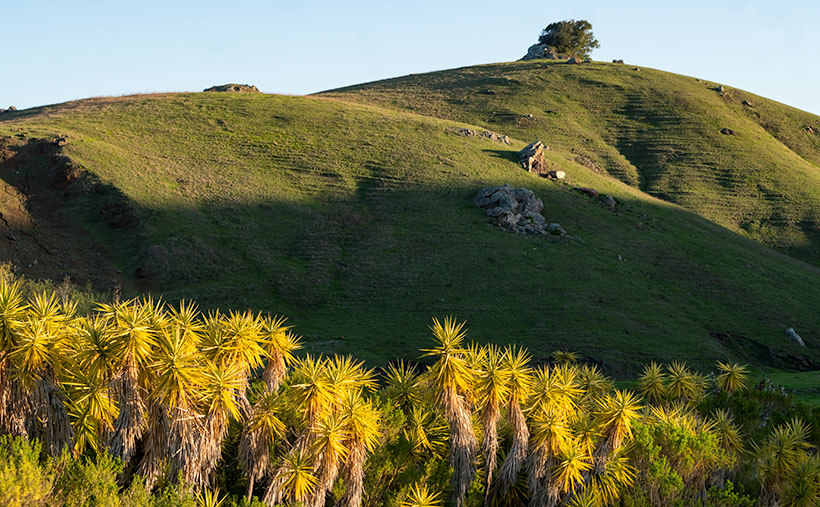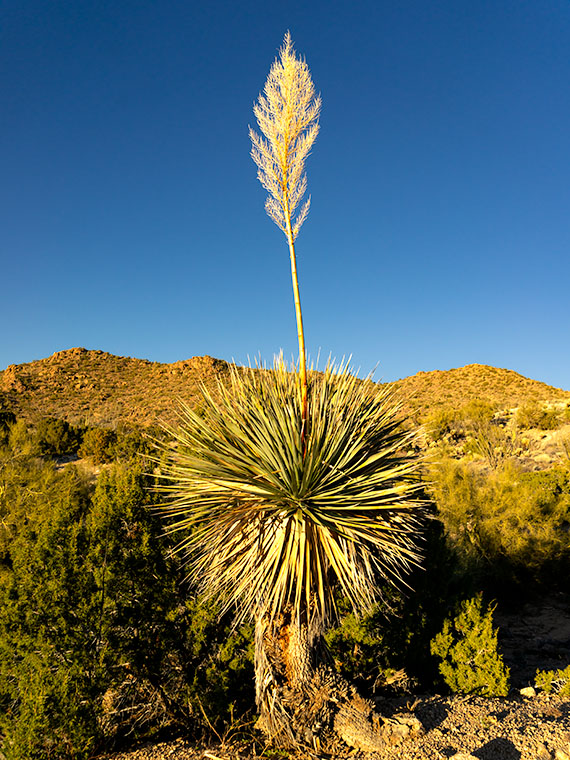I’m a morning person. I wake up at dawn’s first light. If I try sleeping in, I just lay in bed with my eyes open until I give in and get up. Then, I work a few hours (writing blog posts, for example) before we have breakfast, and then it’s time for my morning nap. I haven’t needed an alarm since retirement. In fact, when I need to get up early and set a time on my clock, I wake up before it goes off. That’s the story of this week’s picture.
When Queen Anne and I traveled to California a couple of weeks ago, we only had four days, so that’s two days of driving and two days for play. Since I like photographing in the early morning and late afternoon, I planned to be shooting during those times, even if it meant getting up in the dark.
One of the subjects that I wanted to take pictures of was the Santa Lucia Range’s rolling foothills at sunrise. At home, the sun’s been coming up before 7 am, and since California goes on Daylight Savings Time (whatever for?), I should be good if I hit the road by then, so I set the alarm for 6:30.
During the night, I woke at 12:15, again at 1:37, and yet again at 3:30. By the time 5:45 came, I gave up. I got up and dressed in the dark so I wouldn’t disturb Her Majesty. I grabbed my gear and went out to the car only to remember that I forgot my mask, so I snuck back into the room to retrieve it. Getting up earlier than I expected meant that at least I had time to get a Quickie Mart cup of coffee.
Armed with a fresh hot cup of French Roast, I started driving up to the mountain pass. The amount of traffic that I encountered during the fifteen-minute drive surprised me. But then I realized that I was the one on vacation, and other people were going to work. When I reached the top, I found a safe place to park and waited for sunrise, but the sky was awfully dark still.
It took another hour for the sun to break the horizon. I completely misjudged the effects of the time change, and I didn’t take into account that Cambria is about 200 miles further west than San Diego. When the sun finally came up, I began to slowly make my way back down to the ocean stopping and shooting along the way.

This week’s featured image was taken at a ranch only a few miles inland of the Pacific Coast Highway. The owners had planted a hedge comprised of Yucca plants along their drive. They were in full sun while shadows played on the hills behind them. The contrast in light is interesting, and how the spikey Yucca leaves contrast with the rounded hills. The soft morning light also brings out how years of grazing cattle have created terraces in the hills. That’s good because the cattle would otherwise fall over and roll to the bottom. This terracing reminded me of New Zealand, where sheep have changed the landscape in the same way.
I called this photo Yucca Hedge, and you can see a larger version on its Web Page by clicking here. Be sure to come back next week when we add another picture from our time along California’s central coast.
Until next time — jw

